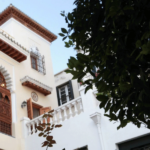On Thursday, December 12, 2019, the 14th session of UNESCO’s Intergovernmental Committee for the Safeguarding of Intangible Cultural Heritage announced additions to its list of Intangible Cultural Heritage.
42 elements were added to the list, including Date palm, knowledge, skills, traditions and practices, Byzantine Chant, Practices and craftsmanship associated with the Damascene rose in Al-Mrah in Syria, Malaysian Silat, Ak-kalpak craftsmanship, traditional knowledge and skills in making and wearing Kyrgyz men’s headwear, Kwagh-Hir theatrical performance from Nigeria, and many other cultural traditions in the Iran, Iraq, Kenya, the Philippines, Spain (and Mexico), Turkey, Turkmenistan, Uzbekistan. Elements from 55 countries were included on this list.
Gnawa music and dance from Morocco was added to the list. You can hear 1959 recordings of Gnawa performances in the Music of Morocco collection on Archnet, as well as photographs by Josephine Powell of Gnawa performances at the Badi’ Palace during the Marrakech Folk Festival in the 1970s, and in Marrakech’s Jema’ el-Fna.
At the end of the committee’s session in Bogota, Colombia, the Aalst Carnival in Belgium was removed from the list due to Anti-semitic imagery.





